Inclusive Design – Design Thinking – UX/UI
Inclusive Design’s next wave breaks for mental health
Our toolkit for designing with cognitive diversity extends into wellbeing
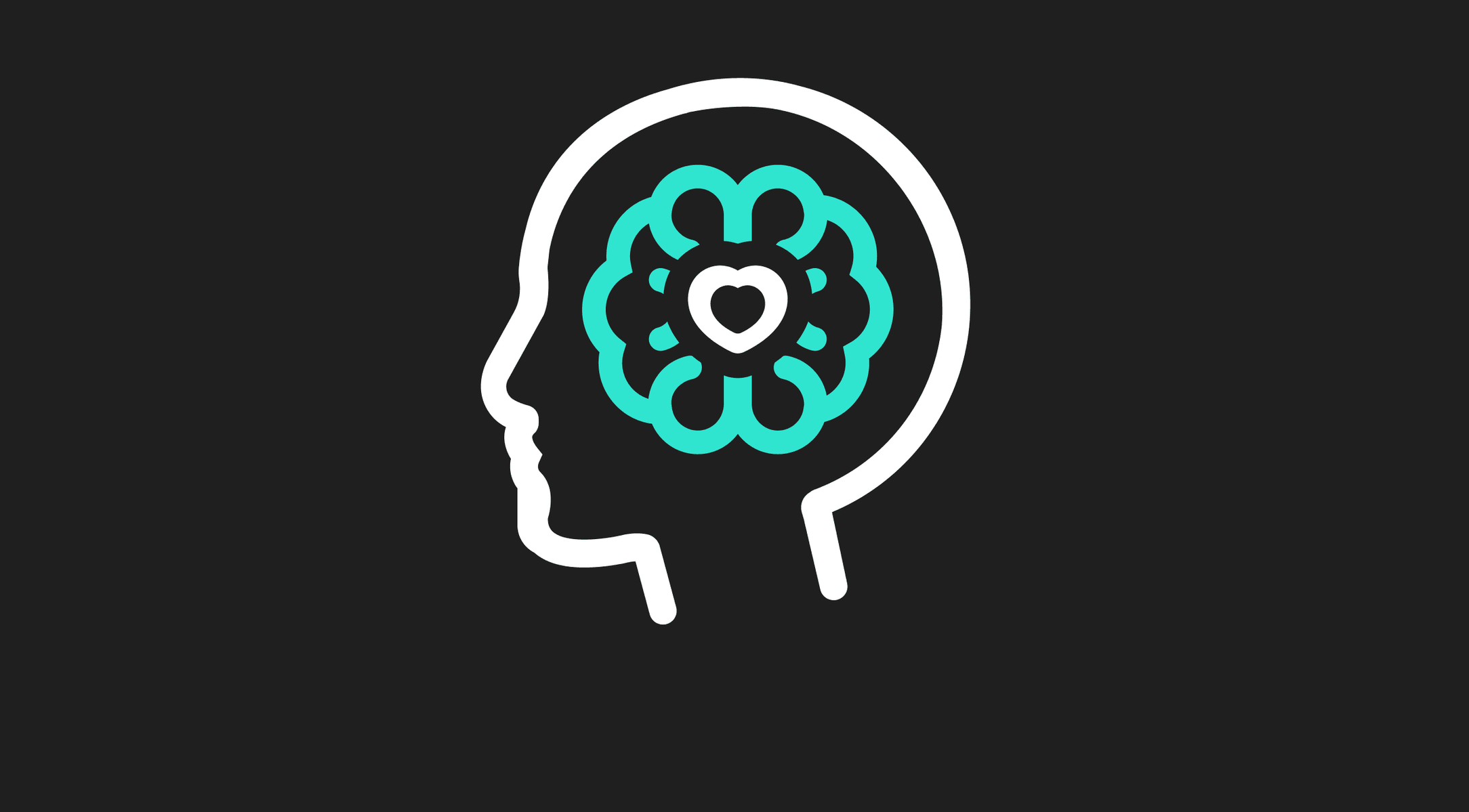
Microsoft designers and researchers broke new ground in 2015 when we launched the Inclusive Design Toolkit. As a first of its kind, the toolkit mobilized teams across the industry. Huge strides were made in creating accessible and usable products for people with different physical abilities, such as mobility, speech, hearing, or vision.
Still missing from the disability landscape, however, is something that impacts one in four people globally: mental health conditions. Mental health conditions rose 25% since the pandemic and employee stress levels are at a record-breaking 44% worldwide. That’s why we’re excited to share our Mental Health Toolkit, an extension of the Cognitive Inclusion Toolkit. Microsoft launched the cognition toolkit last year, which leverages research about how our brains work to create inclusive design product guidance. The first step is to always recognize a person’s motivation, identify cognitive demands, and design with individuals across the cognitive and emotional spectrum. For mental health, after studying which design patterns most impact wellbeing, we targeted the top stressors and created guidance around them for greatest impact. Appropriate default settings, error states, color schemes, motion effects, loading indicators—there are scores of choices designers can make in support of wellbeing.
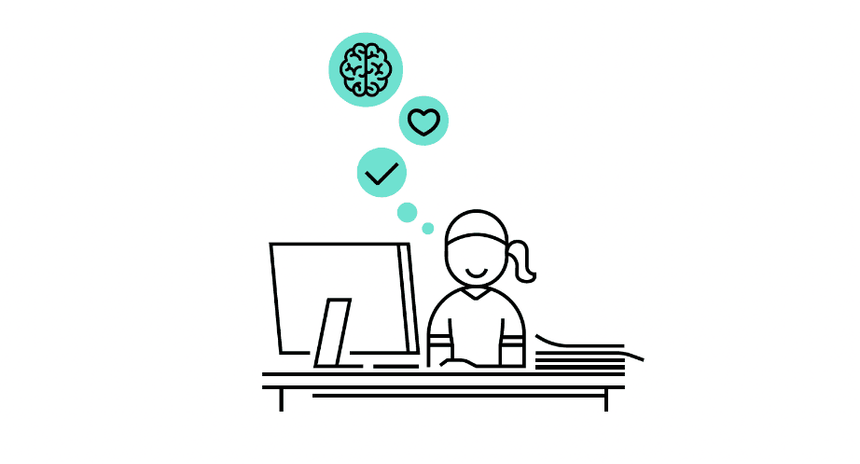
This matters because when products don’t support people with mental health conditions, individuals tend to blame themselves. Productivity tools that aren’t designed with mental health considerations can reduce productivity by creating negative experiences that worsen someone’s emotional state. Conversely, by mindfully designing to remove stressors and recognize achievement, we can enhance someone’s cognitive abilities and overall flow—helping people feel like their best selves in and out of the workplace.
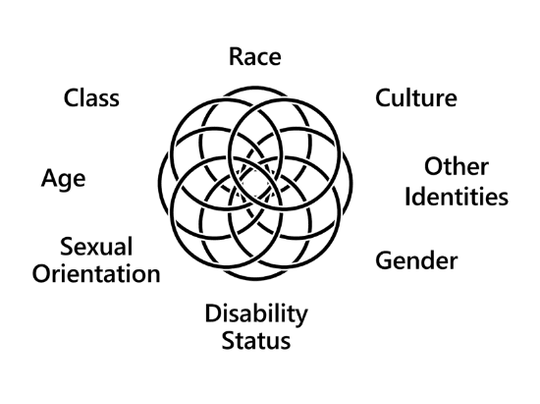
It’s Personal: the guidelines and their creation
“Solve for one, extend to many” is a mantra from the disability community that Microsoft has long used to guide our designs. For the first time, in our continued effort to stay true to that idea, we’re presenting our guidelines and design considerations for mental health. Although we’re excited to share, this work will evolve based on customer feedback because co-creation is the engine driving the work. Solving for individual needs creates more universally valuable outcomes and to create the guidelines, product makers at Microsoft with mental health conditions consulted with Mental Health America. The goal was to create a set of evidence-based guidelines that could be used industry-wide to help ensure mental health and cognition considerations get baked into product development. After all, it can be challenging to balance the diverse and sometimes conflicting needs of people with different mental health conditions, as well as the variation in individual preferences and contexts. This is why pairing the subject matter experts at Mental Health America with the personal and product expertise of folks within Microsoft was so important—it leads to actionable guidance for a wider population. And by aligning our vision and values with other product makers, we believe we can create a positive impact in this new age of productivity.
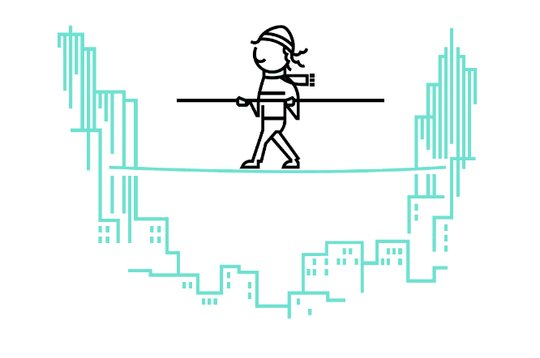
Productivity and mental health aren’t mutually exclusive, they’re extensions of each other. If people don’t feel good about what they’re doing, then the act of completing a task loses meaning. Making people feel capable, confident, and happier can carry over into other parts of their lives. The brain is constantly going through various emotional and neurodiverse states. For designers and developers wanting to create products and services that work well for everyone, designing for the brain poses a significant challenge.
Part of that challenge is understanding the seesaw-like effect of thoughts and feelings on cognitive functions. We use cognitive functions to perform any task, such as attention, memory, reasoning, problem-solving, and decision-making. For example, a person experiencing trauma may have decreased executive functioning, resulting in a lack of focus and ability to achieve. Ultimately, he or she may then also develop anxiety around their inability to focus. Understanding how this unfolds creates an opportunity for solutions, which is why we’ve created a single set of guidance and Figma plugin that can work across both cognition and mental health.
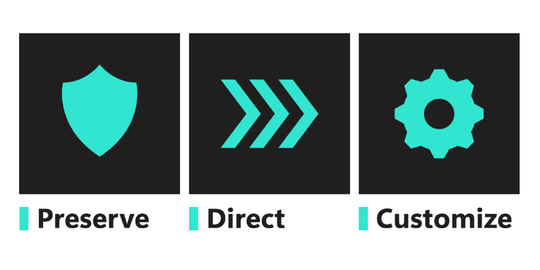
As you apply this guidance, it’s critical to recognize exclusion, and to empathize and co-create with cognitive and emotional diversity. And as you do so, keep three key considerations in mind: Preserve, Direct, and Customize. They are a summarization of the most common feedback from several co-creation sessions with designers, researchers, and mental health experts. We also applied these considerations into product.
Success with less stress: how Copilot in Outlook supports mental health
One of the generative AI developments that Outlook designers leveraged to help people cope with work tasks, avoid overload, provide support, and ease stress, is Copilot in Outlook. Copilot in Outlook includes features that support people’s motivation, making them feel competent, positive, and efficient.
Co-creators with mental health conditions confirmed that Copilot helped manage the cognitive demands on memory and communication, helping users feel confident in their abilities and reducing cognitive overload. By facilitating action, Copilot in Outlook proved to reduce overwhelm and prevent burnout. In experiencing success, people experience more motivation and positive emotions, making the impact of this inclusive design exponential.
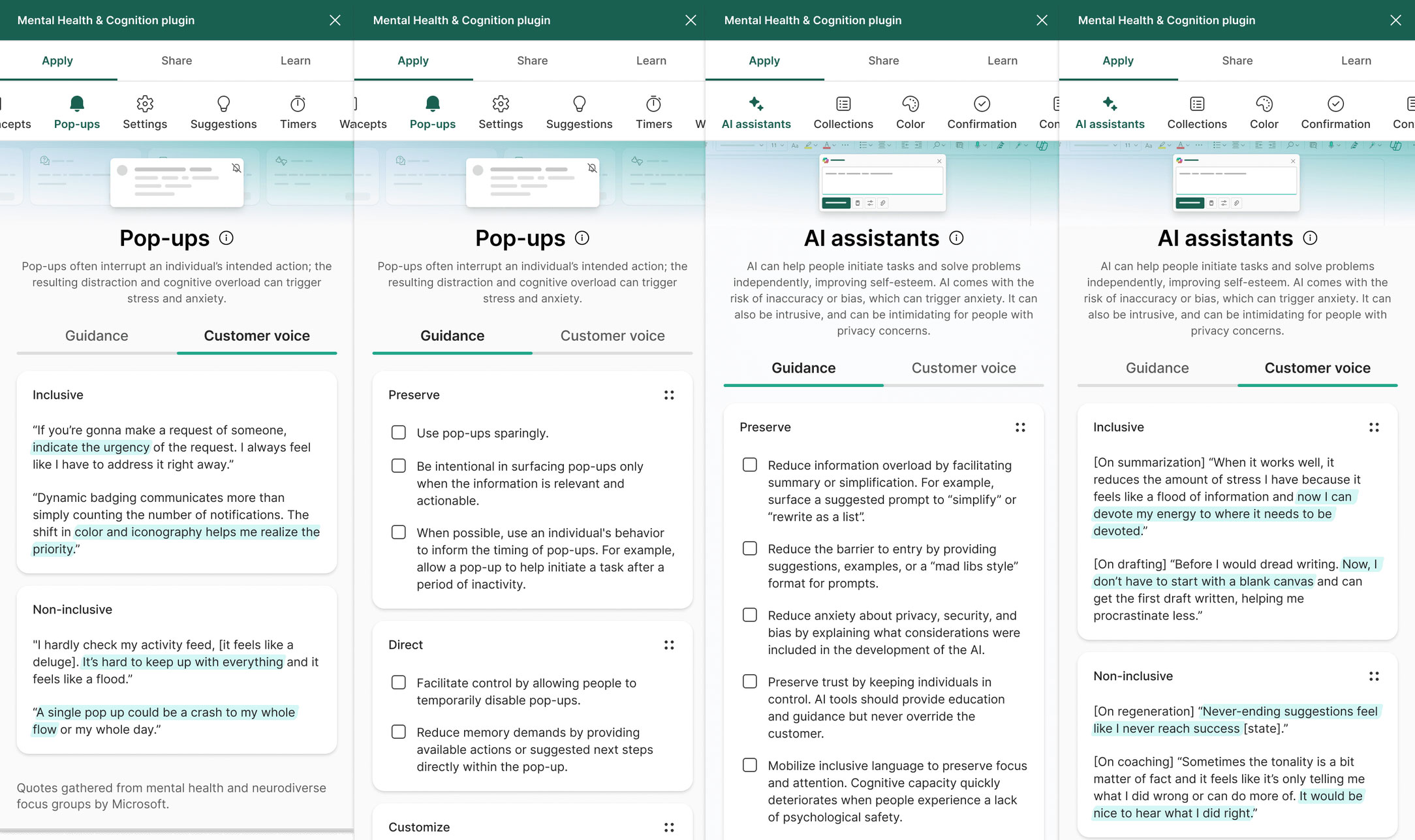
A Figma plugin
As product makers, we want to create UX that protects people’s wellbeing and focus. We believe that by aligning with product makers within and beyond Microsoft, we can create a positive impact on this new age of productivity.
One of the methods we use to protect mental health at scale is through the Fluent design system. Gradually incorporating both the guidance and practices into our own patterns, we will prioritize wellbeing & focus at the atomic level, extending across MS products, and enhancing industry standards. By meeting designers and other product makers at their level of expertise and where they create, we can teach and expand inclusive design. Our product guidance is available on the Inclusive Design website, accessible as a PDF, and our plugin is available to those who use Figma. The plugin provides feedback and suggestions on how to make your designs more inclusive and accessible.
By creating environments and products that cater to diverse needs and preferences, we can foster a culture of learning, creativity, and well-being for everyone. Inclusive design is not only a matter of accessibility, but also a source of innovation and productivity. The inclusive practice is a continuous process of listening, experimenting, and improving. It is a challenge, but more importantly it is an opportunity to make the world less disabling.
For the Mental Health Guidebook, please visit Inclusive Design.
Read more
To stay in the know with Microsoft Design, follow us on Twitter and Instagram, or join our Windows or Office Insider program. And if you are interested in working with us at Microsoft, head over to aka.ms/DesignCareers.
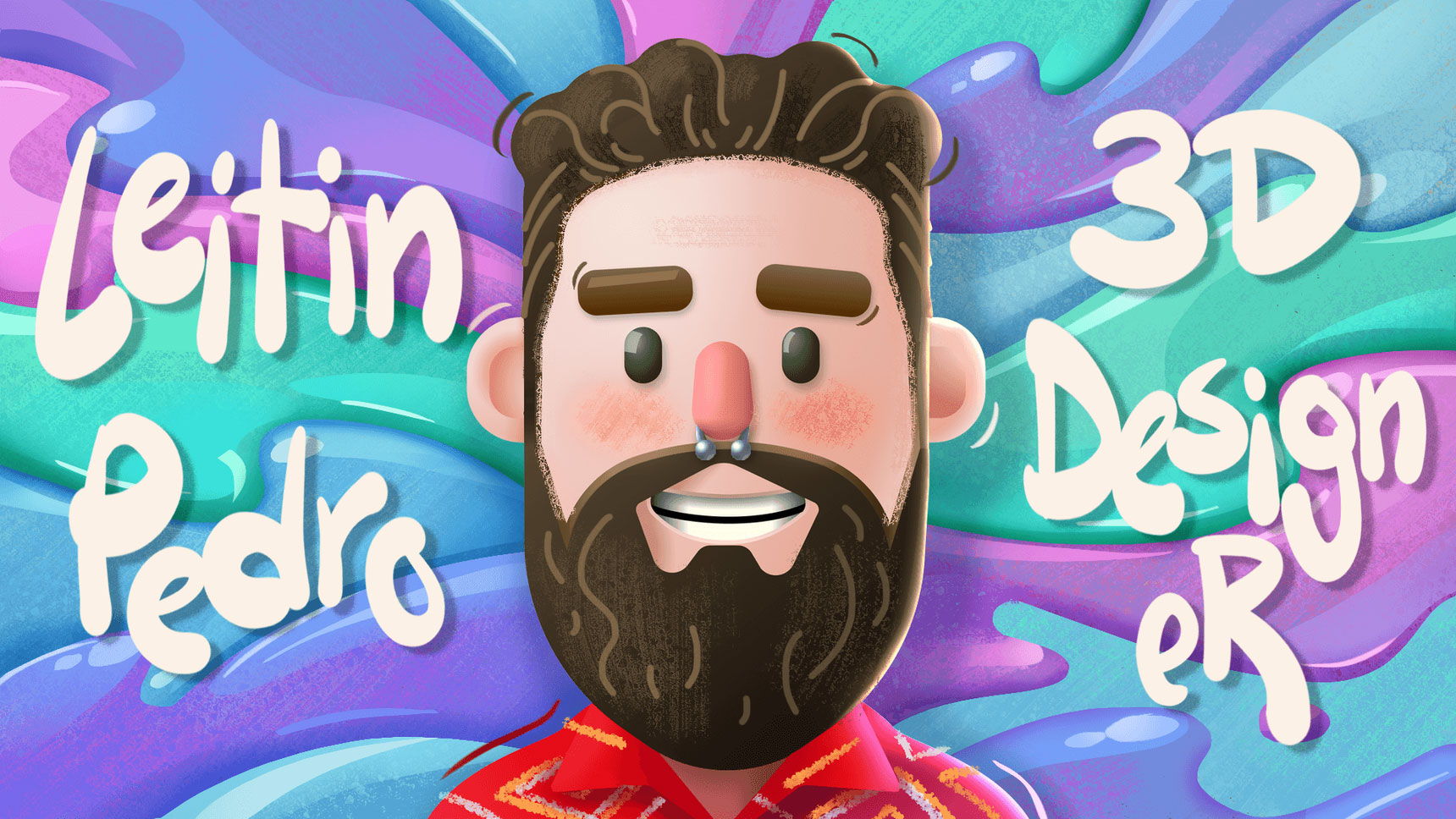
A 3D visual designer talks designing to scale
The demanding field requires constant learning and adaptation to new technologies and tools
